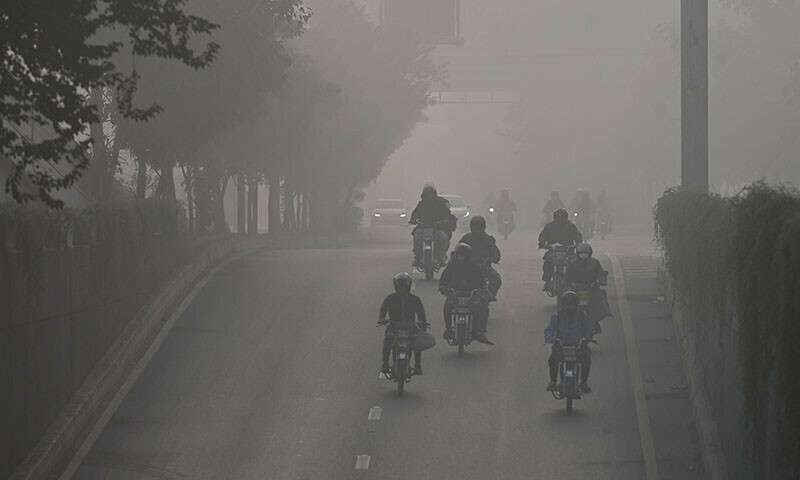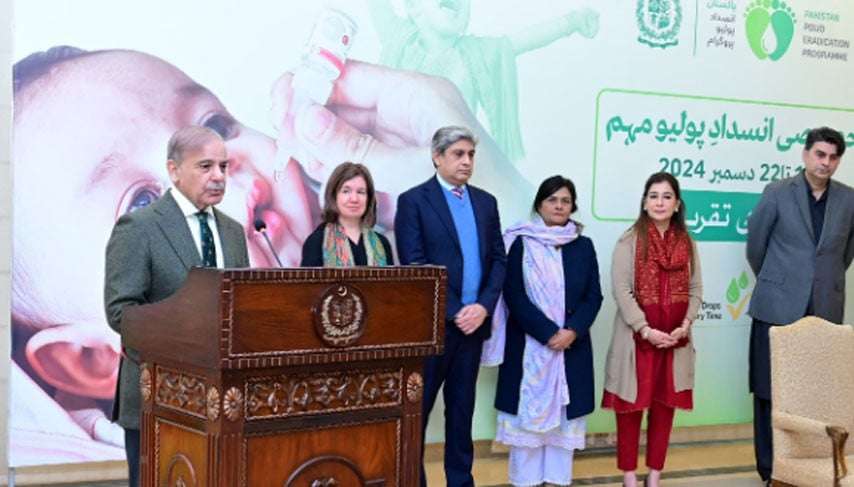The Lahore High Court (LHC) recently issued a crucial order mandating that all schools provide transport services for students, as part of the ongoing battle to tackle the hazardous levels of smog in Punjab, especially in Lahore and Multan. This decision came amidst growing concerns about the severe air pollution in these cities and their impact on public health. The court also called for a vehicle fitness policy to be developed within 15 days, emphasizing the importance of cleaner air and the need for better regulation of vehicles contributing to the worsening air quality.
Introduction: Smog Crisis and Its Impact on Punjab
For the past several weeks, dense smog has taken a serious toll on several cities in Punjab, particularly Lahore and Multan. The toxic pollutants resulting from various sources, including vehicles, industrial emissions, and crop burning, have created a thick layer of haze in the region. According to air quality monitoring stations, the Air Quality Index (AQI) in Multan crossed the alarming threshold of 2,000 twice, setting an all-time high for the region. Such hazardous air quality has prompted the Punjab government to declare a state of emergency in the affected areas.
The situation in Lahore and Multan has led to a series of preventive measures, including a “complete lockdown” on Fridays, Saturdays, and Sundays, with the aim of reducing the number of vehicles on the roads and curbing pollution. However, the situation remains dire, with respiratory issues becoming increasingly common among residents. According to the Punjab healthcare department, approximately two million people sought medical attention for respiratory ailments in the last month alone.
LHC’s Role in Smog Control: A Major Step Towards Policy Enforcement
In light of these escalating challenges, the Lahore High Court, led by Justice Shahid Karim, intervened and ordered several measures to address the root causes of air pollution, particularly vehicle emissions. The court’s decisions were based on a petition filed by citizen Haroon Farooq and other concerned residents, highlighting the need for immediate action to mitigate the environmental impact of smog.
Order for Schools to Provide Transport for Students
One of the key orders issued by the LHC mandates that all schools in Lahore and Multan must arrange for transport services for their students. The aim of this measure is to reduce the number of private vehicles on the roads, particularly during peak hours, when smog levels are at their highest. Justice Karim emphasized that the decision to provide transport should be implemented once the winter vacations end, with the warning that any school failing to comply would face closure.
This move aligns with broader strategies to cut down on the number of vehicles on the road, which is one of the main contributors to smog. The court’s decision also addresses concerns about the health and safety of students, with schools being urged to take responsibility for the safe and clean transport of their students. Justice Karim’s directive stated unequivocally that no school should absolve itself of responsibility by claiming it is not liable for student transportation.
Vehicle Fitness Policy to Ensure Cleaner Air
In addition to the school transport mandate, the LHC has called for the development of a vehicle fitness policy aimed at reducing harmful emissions from vehicles. The court has instructed the Punjab Transport Department to submit a comprehensive vehicle fitness policy within the next 15 days. Under this policy, vehicles will undergo regular fitness checks every three months, and only those deemed fit will be allowed to operate on the roads.
This policy is part of a broader effort to regulate the use of older, polluting vehicles and ensure that all vehicles on the road meet certain environmental standards. The transport department will also be required to maintain a database of all public and private buses operating in the region, which will be subject to these regular checks. This initiative could help reduce the significant contribution of vehicular emissions to the region’s smog problem.
Inauguration of Mobile Units for Vehicle Inspection
A unique aspect of this initiative is the involvement of three-year-old Amal Sukhera, a young petitioner who had filed a petition for the enforcement of the fundamental right to a clean and healthy environment. The court has ordered Amal Sukhera to inaugurate mobile units for inspecting vehicle fitness, a move that adds an innovative dimension to the implementation of this policy. These mobile units will help facilitate quick inspections of vehicles in various areas, ensuring compliance with the new fitness standards.
The LHC’s decision to involve a young child in such an important initiative serves to underline the urgency of addressing the environmental crisis and the need for everyone to take responsibility for creating a cleaner, healthier environment.
Smog’s Toll on Public Health
The smog crisis has already taken a heavy toll on public health in Lahore, Multan, and other parts of Punjab. According to data provided by the Punjab healthcare department, nearly two million people visited medical facilities in the last month due to smog-related issues, including breathing problems and other respiratory diseases. Among the most commonly reported illnesses were asthma, bronchitis, and other lung infections, which have been exacerbated by the dense pollution.
The smog in these regions has also caused serious disruptions to daily life, including the closure of schools and the cancellation of outdoor activities. Hospitals have seen a sharp increase in the number of patients suffering from respiratory issues, and authorities have been forced to take extraordinary measures to address the crisis.
Challenges and Potential Solutions to Combat Smog
While the LHC’s orders are a step in the right direction, the challenge of curbing smog remains a long-term issue that requires coordinated efforts across various sectors. Some of the challenges include the large number of older vehicles on the roads, inefficient public transport systems, and the seasonal burning of crops in neighboring agricultural regions.
One potential solution could involve greater investment in cleaner public transport options, such as electric buses, which could reduce the reliance on private cars. Additionally, stricter enforcement of regulations on industrial emissions and agricultural burning could also help reduce the sources of smog. Public awareness campaigns about the importance of reducing vehicle emissions and adopting cleaner alternatives will be crucial in the coming years.
Conclusion: A Step Towards Cleaner Air and Safer Streets
The Lahore High Court’s orders represent a significant step in the fight against smog in Punjab. By mandating schools to provide transport services and pushing for a comprehensive vehicle fitness policy, the court is taking a bold stance on reducing pollution and improving the quality of life for the residents of Lahore and Multan. However, this is only the beginning. A sustained effort from the government, private sector, and citizens will be essential to achieve long-term solutions and ensure that future generations can enjoy clean and healthy air.
FAQs:
1. Why did the Lahore High Court order schools to provide transport? The court’s decision aims to reduce the number of private vehicles on the roads during peak hours, which are major contributors to smog and air pollution. By providing transport for students, schools can help reduce the environmental impact of traffic congestion.
2. What is the vehicle fitness policy required by the Lahore High Court? The court has ordered the Punjab Transport Department to develop a vehicle fitness policy that includes regular inspections every three months. Only vehicles that pass these inspections will be allowed to operate on the roads.
3. How will the mobile units help in inspecting vehicles? Mobile units will be deployed to inspect vehicles in various locations, making it easier to monitor compliance with fitness standards and ensure that vehicles on the road meet environmental regulations.
4. What is the impact of smog on public health in Punjab? Smog has led to a rise in respiratory illnesses, with over two million people visiting medical facilities for breathing problems. Conditions like asthma and bronchitis have worsened due to prolonged exposure to toxic pollutants.
5. How can smog levels in Punjab be reduced in the long term? Long-term solutions include improving public transportation, reducing industrial emissions, and enforcing stricter regulations on agricultural burning. Public awareness and community involvement will also play a key role in reducing pollution.
MUST READ:



